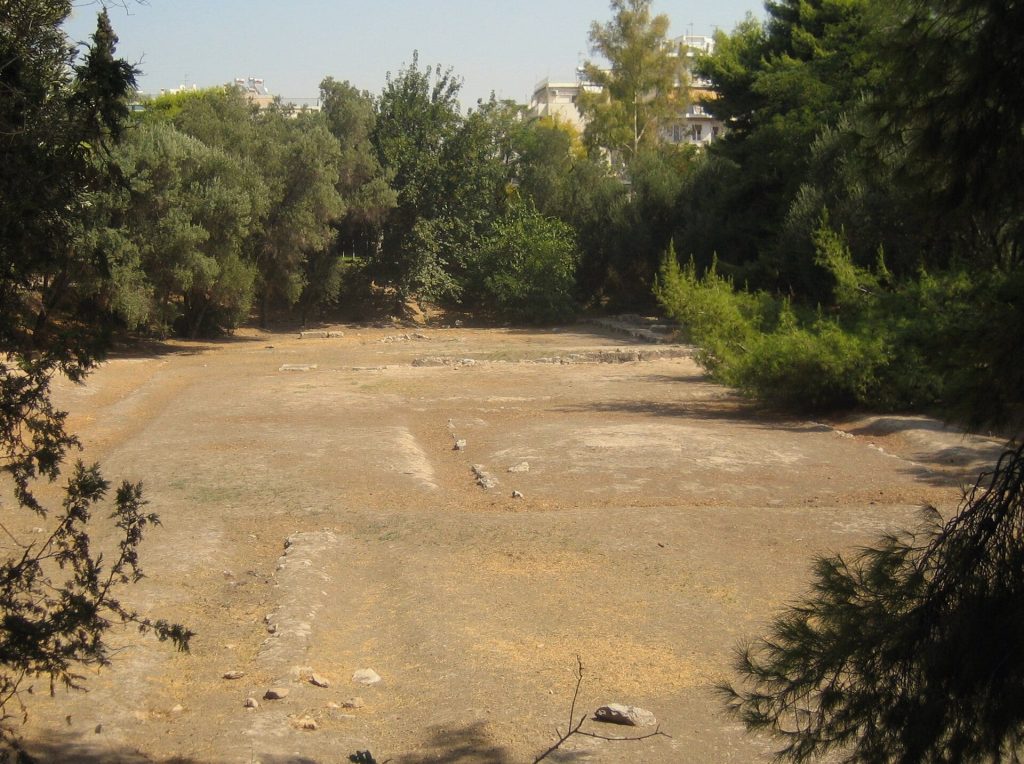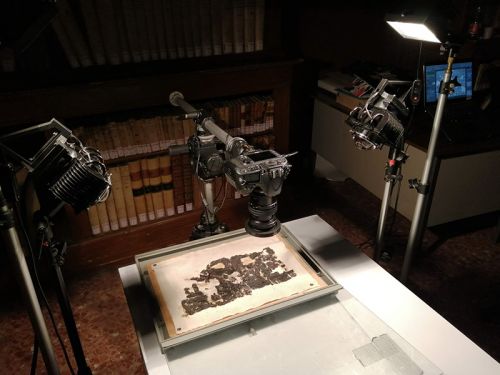
Herculaneum papyrus gives information about Plato’s burial place
Researchers have found evidence of Plato’s burial place in a charred Herculaneum papyrus containing the History of the Academy of Philodemus of Gadara (after 110-40 BC), discovered in the town of Herculaneum near Naples.
Plato (428/348 BC) was one of the most important philosophers of Ancient Greece. A student of Socrates and teacher of Aristotle, Plato is considered one of the founders of Western philosophy.
In 407 BC he met Socrates and became his student. After Socrates’ death, he traveled to Megara, Tarentum and Egypt.

He returned to Athens in 387 BC and founded the Academy.
The Academy was the first institution of higher education in the Western world, providing education in various subjects such as philosophy, mathematics, science and art. Plato died in Athens at the age of 80.
The Herculaneum papyri are ancient Greek texts that were charred by fire during the eruption of Mount Vesuvius in 79 AD, containing very special information about the development of the Academy under Plato and his successors. These papyri contain important insights into philosophy, literature and scientific thought at the time.

As part of an ongoing project, researchers have managed to partially decipher a scroll containing the History of the Academy of Philodemus of Gadara (110-40 BC).
Modern imaging techniques such as infrared, ultraviolet optical imaging, molecular and elemental imaging, thermal imaging, tomography and optical microscopy digital were used in the study.
The papyri are very fragile and folded due to burning. Attempting to open them using traditional methods can lead to the destruction of the texts, so computed tomography (CT) scans are used to create virtual images of the papyri.
The team uses artificial intelligence technology on these virtual images to identify the letters and decode the texts.
The latest study found nearly 1,000 words – a 30% increase in new words – including information about the development of the Platonic Academy and information describing Plato’s burial place.

Thanks to the new edition and its contextualization, the scholars reached unexpected conclusions about the interdisciplinary scope for ancient philosophy, Greek biography and literature, and the history of the book, said team member Graziano Ranocchia.
“Some previous integrations have been modified, some previously fragmented passages have been integrated or reread. The increase in text roughly corresponds to the discovery of ten new medium-sized papyrus fragments. The new readings often benefit from new and concrete facts about Plato’s Academy, Hellenistic literature, Gadara’s Philodemus, and ancient history in general,” adds Kilian Fleischer, editor of this valuable papyrus as part of the GreekSchools project.
Among the most important novelties, we read that Plato was buried in the dedicated garden of the Academia in Athens (a special area for the Platonic school), close to the Museion, or sacred temple to the Muses. Until now it was only known that he was buried in general at the Academia. Still on the subject of the same philosopher, it turns out that he was sold into slavery on the island of Aegina as early as 404 BC when the Spartans conquered the island, or alternatively just after the death of Socrates in 399 BC.
Until now, it was believed that Plato was sold into slavery during his stay at the court of Dionysius I of Syracuse in Sicily in 387 BC.
Cover Photo: Shutterstock
You may also like
- A 1700-year-old statue of Pan unearthed during the excavations at Polyeuktos in İstanbul
- The granary was found in the ancient city of Sebaste, founded by the first Roman emperor Augustus
- Donalar Kale Kapı Rock Tomb or Donalar Rock Tomb
- Theater emerges as works continue in ancient city of Perinthos
- Urartian King Argishti’s bronze shield revealed the name of an unknown country
- The religious center of Lycia, the ancient city of Letoon
- Who were the Luwians?
- A new study brings a fresh perspective on the Anatolian origin of the Indo-European languages
- Perhaps the oldest thermal treatment center in the world, which has been in continuous use for 2000 years -Basilica Therma Roman Bath or King’s Daughter-
- The largest synagogue of the ancient world, located in the ancient city of Sardis, is being restored











Leave a Reply